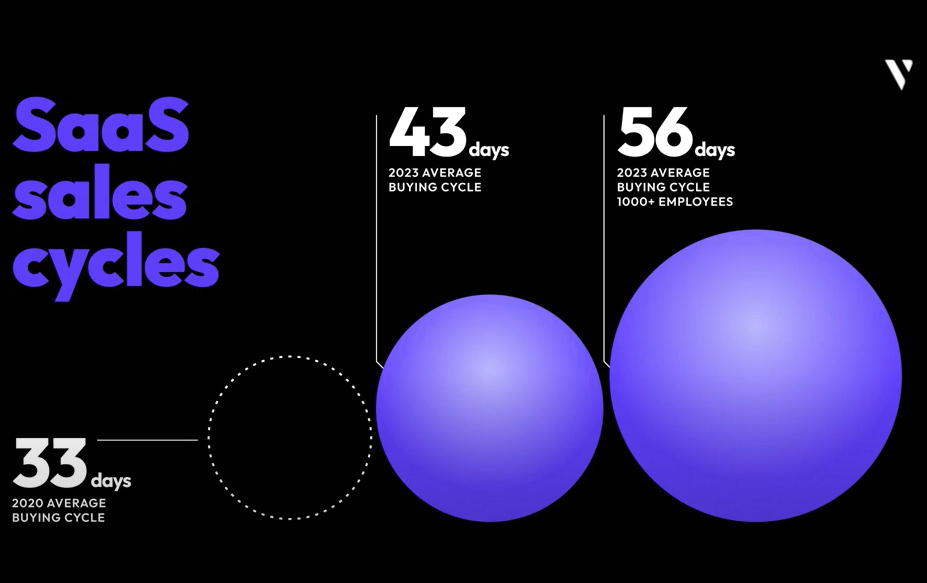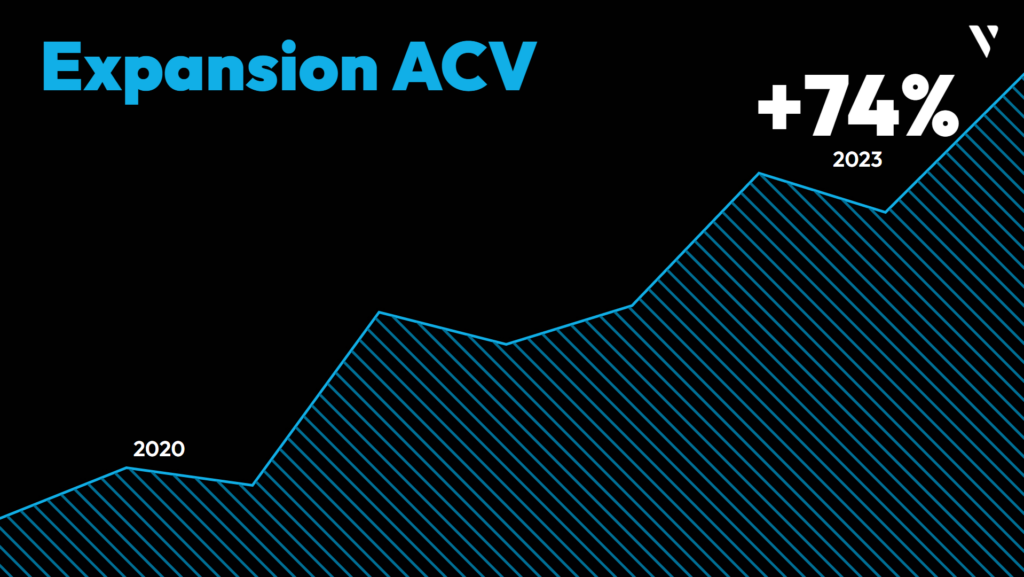After more than two decades of market saturation, trends across B2B SaaS are shifting toward consolidation.
Why? Necessity.
Sales and marketing professionals are overwhelmed with data, tools, and services. In a recent industry survey, virtually every CMO said they were using at least 10 separate data providers, with more than half using 14 or more data sources.
And according to Harvard Business Review, the average knowledge worker switches between tools or applications around 1,200 times per day, with an average time cost of roughly two seconds per switch. That “toggle tax” can add up to four hours per week.
It’s simply no longer feasible for businesses to rely on dozens — if not hundreds — of software vendors and data providers. As customers look to consolidate around better solutions, B2B software providers are increasingly prioritizing an integrated, consolidated approach, leaving behind the fragmented, ultra-specialized blueprint of years past.
How can companies ensure the tide of consolidation is running in their favor? This was one of many questions that ZoomInfo CFO Cameron Hyzer and Vendr CEO Ryan Neu discussed during a recent webinar.
B2B SaaS: Greater Scrutiny, Longer Sales Cycles
As the world’s leading SaaS procurement platform, Vendr is uniquely positioned to observe changes to B2B purchasing patterns. The company’s data reveals the extent to which tech-stack consolidation is already happening across B2B SaaS.
According to Vendr’s data, net-new software purchases were down 17% year-over-year in 2023. That means many companies are reevaluating their relationships with software vendors, driven in part by the ongoing need to reduce costs.

Image/data via Vendr
“Right now the name of the game is, `How many fewer suppliers can I be working with?’” Neu says. “How much more work, or more jobs to be done, can I ask those current suppliers to do on my company’s behalf? That’s the general theme that we’re seeing.”
In addition to a significant reduction in net-new software purchases in 2023, vendors are contending with increasingly lengthy sales cycles, especially in the enterprise space.
In 2020, the average B2B SaaS sales cycle was 33 days. Today, it’s 43 days — with an average of 56 days for deals involving companies with more than 1,000 employees.

Image/data via Vendr
This, combined with greater scrutiny of the potential ROI of technology investments, has resulted in a particularly challenging sales environment.
“It comes back to scrutiny,” Neu says. “During the good times — low interest rates, easy to raise money — it was also easy to spend money. Now, all of a sudden, our customers’ companies are increasing the pressure. Do we actually need these products? And these questions naturally start to include more people in the approval process.”
Vendr’s data could be discouraging for salespeople, but it’s not all bad news. Although deals are under more scrutiny and sales cycles are getting longer, Vendr’s data reveals that when deals are closing, they’re typically closing for much more than they were in recent years.
Net-new deals are closing 8% higher on average in 2023 than they were in 2020, with renewal deals closing 13% higher.
The true area of opportunity is expansion, which saw an increase of 74% in ACV from 2020 to 2023. “That slice of pie is actually much more stable. In fact, it’s starting to increase,” Neu says.

Image/data via Vendr
“This is the clearest sign that consolidation is actually happening,” Neu says. “There’s a really good story to tell where CFOs are likely happy to spend more money with a platform if that platform can help them consolidate elsewhere. That’s where we’re seeing dollars being spent. There’s a new decision-maker in town, and their name is the CFO.”
B2B SaaS: Efficiency is the New Growth
With CFOs taking a central role in software procurement, especially at enterprise businesses, many companies are pursuing greater efficiency gains over raw growth.
“Growth cures a lot of evils,” Hyzer says. “But in a world where the economy has slowed down, raising money has gotten much harder, the cost of capital has increased really significantly as interest rates have gone up — you can’t rely on growth to cure your sins. You need to really focus more on efficiency. And when you’re focusing more on efficiency, that means that the CFO is asking a lot more questions.”
Data from Ernst & Young indicates that SaaS startups established within the past decade experienced average revenue growth of between 20–30%. This growth was often accompanied by increased spending, with sales and marketing investments accounting for between 40-50% of that expenditure.
As interest rates have risen, growth has slowed at many companies and some have seen significant declines in revenue, leading to delayed or deferred investments, reductions in headcount, and greater expectations of existing employees. It has also spurred a renewed emphasis on efficiency and profitability.
Tech stack consolidation: Asking the tough questions
With budgets and software capabilities under greater scrutiny, tech-stack consolidation is becoming increasingly common for companies pursuing greater efficiency.
The saturation of the B2B SaaS market over the past decade has resulted in thousands of tools designed to accommodate even the most fringe use cases. The proliferation of SaaS products has resulted in considerable overlapping functionality between tools and significant redundancy across many companies.
According to Neu, the challenge facing CFOs seeking to consolidate their tech stack is twofold: gaining true visibility into application use across the entire business, and justifying those investments.
“In order to consolidate, the first thing you need is visibility,” Neu says. “What’s the size of the pie here? How many apps are actually out there at my company? Number two, is really justification. Are there products we could get away from? As CFOs and buyers of software, it’s just really critical that you ask the next-level questions to your team of what would happen if you actually were forced to leave this product or application.”
Even previously approved investments should be scrutinized carefully with an emphasis on value, because the time or productivity gains promised by a point solution or software platform often aren’t fully realized.
Quality B2B Data: The Foundation of Modern GTM
Lingering economic uncertainty, increased competition, and the proliferation of automation technologies such as generative AI are all likely to push more tech-stack consolidation.
For companies seeking to consolidate their tech stacks, Hyzer recommends investing in unified systems that enable sales, marketing, and operations teams to work from a single, comprehensive data foundation.
“If you have data in one application that doesn’t talk to other applications, that’s a real loss of opportunity,” Hyzer says. “If you are able to find a platform to put all of these different niche use-cases in, and you have data that’s all in one place, even if it’s your own internal first-party data, the long-term benefit is really about being able to manage your business and your processes in a more thoughtful way.”
To learn more about how data and tech-stack consolidation can help your business grow, check out the full webinar.

